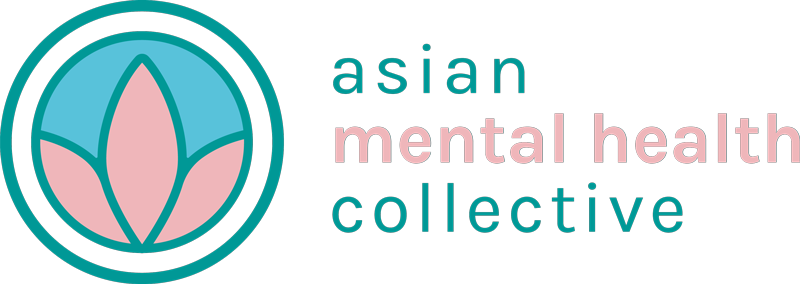By: Em Wong
No, it’s not a typo.
So, recently I’ve been reading heaps of personal finance blogs. I’ve started my first grown-up job and am looking into investing for my future. (I aim to live off my investment profits by 40. FIRE, anyone?) All this has got me thinking about how the concepts of investing and growing financial wealth can transfer to… mental health. Let’s talk about investing in your mental health so it pays dividends in the future!

Turning Mental Health into Mental Wealth
1. Know your values when you set up your budget (your mental budget, that is)
Follow along with me on this metaphor. You have mental currency that you earn and spend. To be mentally wealthy, you’ve got to budget and invest well. So what are your needs? What’s important to you? What makes you feel fulfilled and happy? That’s where you should spend your mental currency – aka your attention, time and energy. Work out what aspects of your life uphold your values, and what don’t. Are you spending too much on energy drains and unnecessary purchases? Alter your budget as required. Know where your mental currency is going. Be more intentional in your budget. Focus on quality, versatility and joy. Marie Kondo your budget, Marie Kondo your life.
2. Beware the comparison trap – where are your spending impulses coming from?
We all know the dangers of Instagram – from enticing you to buy future clutter… to bombarding you with pretty people and FOMO. For those aspirational impulse spenders out there – you can change how you use social media. Unfollow, unlike, mute, delete. It’s a little harder in real life, but we can be aware of people and situations that mentally drain us. If you find yourself trying reaching for an impossible standard – stop and ask why. Who is pressuring you to be someone you’re not? Make some healthy swaps. A little self-awareness and introspection can curb a lot of unhelpful impulses.
3. Get rid of temptation!
You know those spam emails from your favourite store? They pop up in your inbox, promising a whopping 20% off summer shorts? So hard not to click… (Or any time there’s chocolate in the house – good luck, Emily’s self-control.) It’s much harder to exercise self-control when temptation is right in front of you. Do you always end up in the same unhealthy situation (e.g. sick with a stomach full of chocolate and a new pair of shorts)? Notice your triggers. If you can avoid it from the start, it saves a lot of mental stress later on.
4. Never go to the supermarket hungry
On the topic of chocolate-gorging triggers – I’ve learnt to never go to the supermarket hungry. I always reach for the unhealthy snacks. (Read: chocolate). In that same vein, do something that fills up your mental energy bucket before events that you know will tax you.
5. Cut and combine debts
The first debts to tackle are the small ones you can pay off fast. They’ll give you the momentum to move forward. Next are the ones with the highest interest, which allow you to minimise wasted dollars. If you’re able to combine your loans, it helps you feel more in control. If you want to stop spending money you don’t have, you could cut up your credit cards and use cash instead. (Sorry for the actual financial advice – but it’s the same with mental debts). Is there a bunch of stuff you’re avoiding? Is it taking a toll on your mental health, causing knock-on effects in the rest of your life? Are you spending mental currency you don’t have, and then not paying yourself back? I know it’s hard and uncomfortable, but the sooner you work on paying off debts, the sooner you can gain control.
6. Do your research before you invest – but definitely invest
Look, I’m forever salty that I didn’t invest in Bitcoin when I first heard of it in 2012. But that doesn’t matter now. Cryptocurrency seems a little too risky and shady for my taste anyway. I did some research and invested in sustainable ETFs. They select stocks that pass a certain ethical standard. In real life, you have a choice of who and what to invest your mental currency in. You’ve got to know who to trust (there are some dodgy advisors out there). You also have to select ones you like and gel with. That takes time and effort. Yes, there’s always risk involved. There will always be a market crash. But you can’t grow your wealth unless you somehow invest. In other words, you gotta be in it to win it. Invest in life.
7. Diversify your assets and spread your risk
On that note, it’s always a good idea to diversify your assets so that if one thing crashes you don’t lose it all. Don’t invest all your money in one chocolate company (delicious, but bad for you). You could invest in many chocolate companies. Or, the marketing company that makes the chocolate ads. Invest in the Chocolate Appreciation Society (dunno why it’s listed on the stock market). Then invest in bread and also dogs. It’s the same with your support system. You need more than one confidante. You might have a support group, a community, a best friend, a therapist, a GP, a psychiatrist, a pet. Then there are books, apps, music and hobbies. A daily routine, a self-care ritual, walks in nature, memes, and so on and so forth.
8. Be grateful for the simple things in life (it’s what makes you happy)
You don’t need to save up for that expensive car, holiday or chocolate factory to finally be happy. Collect little rituals and do free things that give you joy, and you can have that feeling many times a day. It’s the same feeling, honest. I find joy in drinking a cup of tea, sharing smiles with babies, and making endless music playlists. Oh, and also chocolate! All without the expense of an expensive plane ticket from Australia to anywhere.
9. Have some savings goals and a future vision
So what are you actually saving for? All that money has to be for something. My financial goal is to have financial freedom and live off my investments. Then I can spend time working on my passion: being a world-famous chocolatier. Now what about mental wealth goals? When I was young, I suffered from debilitating social phobia. But I worked hard on my social confidence. I wanted to achieve my personal and career goals without my fears inhibiting me. I wanted to help others in the way that I needed, but never had. (That’s a story for another post). But here I am, I’ve gotten way further than I ever thought I’d get, and I’m using this platform to make a difference.
10. Don’t be an amateur day trader; don’t get swayed by market panic
Obsessing over tiny changes in market volatility is exhausting and time-consuming. Plus, over a few decades you don’t win out over the people who invest and forget and let compound interest do its thing. This is all to say, don’t sweat the small stuff. There are always going to be tiny bumps in your day, but it’s how you respond to them that count. Even if there are big bumps – the trajectory of the stock market has always gone up over the long term. You’ll recoup that loss. Hold onto your blue chip stocks. The economy is cyclical and you’ll live through a few recessions. If you’ve got a life philosophy and a long-term plan, then don’t panic – you’ll win out in the end.
11. Get a side hustle
Diversify your income streams. Write that ebook, drive for uber or deliver pizza. Extra points if your side hustle hits one of your secret passions – if you’re lucky it can become your day job. Diversifying your mental income? Find a volunteer position, a creative hobby, or whatever else your soul loves.
12. Know what to splurge and save on
Splurge: mattresses. Save: random micro trends. Invest your mental currency in things that add the most value to your life. Things like healthy relationships, fulfilling activities, good quality sleep. Save on things like those “friends” who are fun to hang out with but would never be there for you when you need them. They’re not important.
13. Use a reusable water bottle (and reduce cognitive dissonance)
A reusable bottle is better for the environment and my wallet but also my brain. Any time I buy anything with single-use plastic (usually out of convenience), I get eco-guilt. I value caring for the environment but my priorities aren’t aligning. Cognitive dissonance is mentally taxing. Take a look at your values, and your habits. See where there are discrepancies. Make some changes. You can save yourself a heck of a lot of subconscious mental distress. (To the boba drinkers out there for whom this is a thing too – you can buy reusable boba cups too!)
14. Pay yourself and treat yo’ self
You’re the CEO of your life, so make sure you pay yourself. Treat yourself with kindness and love. No real money necessary.
15. Start making regular investments for your future
It’s never too late or early to start investing in your future – whether it’s financial or personal. Some people are waiting for the next stock market crash to dump a massive lump sum in there. But we have no idea when this crash will happen. It could be next month or in 2 years time, and in the meantime you’re missing out on potential gains. The best method is to make regular payments so that you can benefit long term, and put some extra in when it’s down. It’s the same with getting support. Don’t wait until you’ve hit a crisis, or after exam season when you have “more time” (but less stress), because then it’s too late. The best way to handle a crisis is to prevent it. Keep checking in – whether that’s with your therapist, doctor, or a trusted mentor.
16. Find some ingenious saving hacks
Some people save all their $5 notes. Some round up all their bank transactions and invest the difference. You can apply this in life – for example – set up an app to save happy photos or a box for cute notes from friends. Make a reminder to write down one thing you’re grateful for every night. When you need a little pick-me-up, you can go into your stash and remind yourself of the good times. I started an annual survey for myself in 2010. Every October I answer my questions about my life and goals at that point. It’s an amazing way to see how I’ve grown over the past ten years.
17. Change banks for the best rates, set and forget
This year, I realised I was getting pitiful interest on my bank account. There are heaps of snazzy new zero-fee-high-interest online banks out there. So I made the switch. It’s like receiving free money. Then I set up automated transfers to make life easier. Who knew banking could be so fun!? Sometimes there’s a possible big transition that would make life so much easier. The hard part is sitting down and getting it done. Do it. You’ll thank yourself later.
18. Learn how to meal prep some delicious and nutritious lunches for work
This is the ultimate in self-care and financial savvy. It feels so good to eat something healthy, hearty and cheap that I’ve made. I don’t do this enough but I’m going to make it a priority this year.
19. Don’t beat yourself up about buyers’ remorse
Sometimes you buy a thing, and then you question your life choices. It’s easy to beat yourself up about things you’ve done. Of course, it made sense at the time, or else you wouldn’t have done it. We all make mistakes. The only thing you can do now is to learn from it. In the future you won’t buy the metre long soft toy shark from Ikea despite being a grown adult with no children. (JK, no regrets.)
20. Life changes are hard, so get a buddy
My best friend is a straight-talking sort of person who has been my rock for 16 years. She knows me better than anyone (and knows how fickle I am in doing what I say I will). She’s seen me grow from that quiet girl to the crazy people-loving extroverted introvert I am today. (Change is hard for her. She’s working on adjusting.) My friends from home remind me of who I am at my core and how far I’ve come. My new friends give me the opportunity to explore new possibilities. No matter who it is, we usually spend too much money on good food (it’s worth it) or eating too much chocolate (also worth), and then I convince everyone to do karaoke (hey, let’s do karaoke!). Even if we have no money left, good friends are the best sorts of wealth.
Disclaimer: I’m not a financial advisor, so take my unqualified financial advice with a grain of salt! Say you’re not on a liveable income or are in a financial crisis. This article may not be immediately applicable to you. The same goes for mental health crises. That’s ok! Take care of the emergencies first.
About the Author

Emily Wong
Em is a 26-year-old Aussie doctor and future psychiatrist. Her passion is integrating the arts into mental health advocacy, education and practice. Em is an adventurous introvert, art gallery enthusiast and karaoke fiend. Most importantly, she LOVES DOGS.


